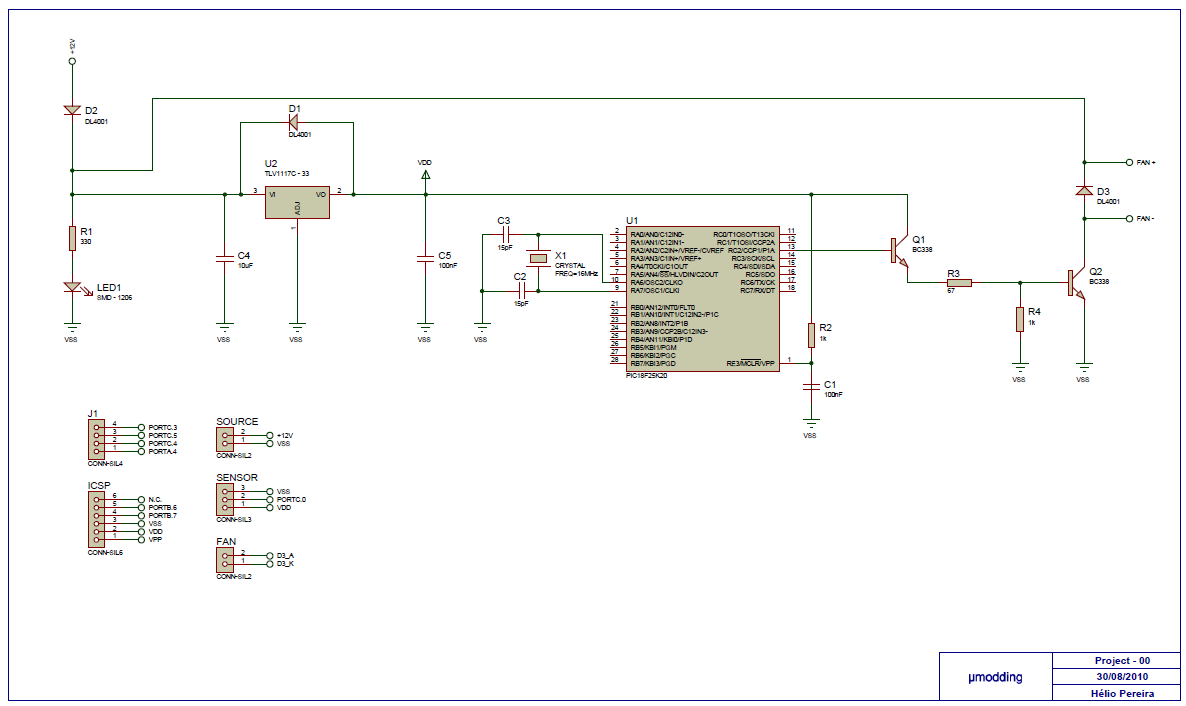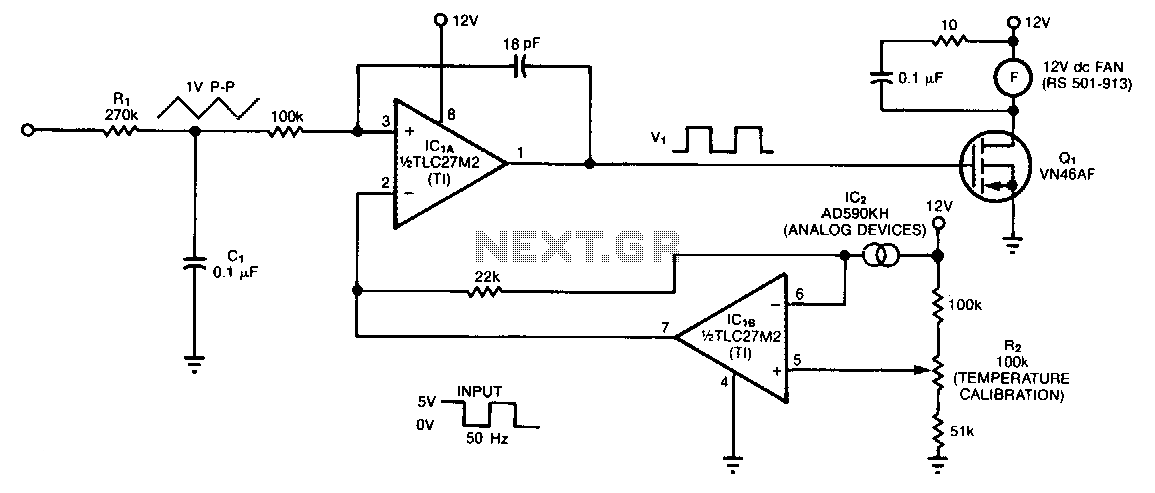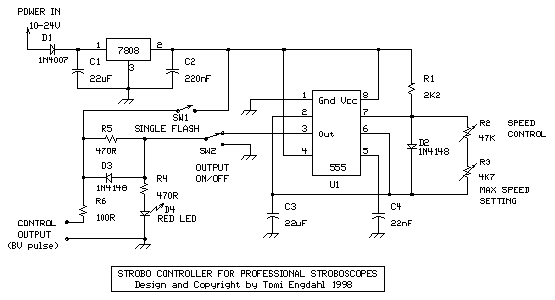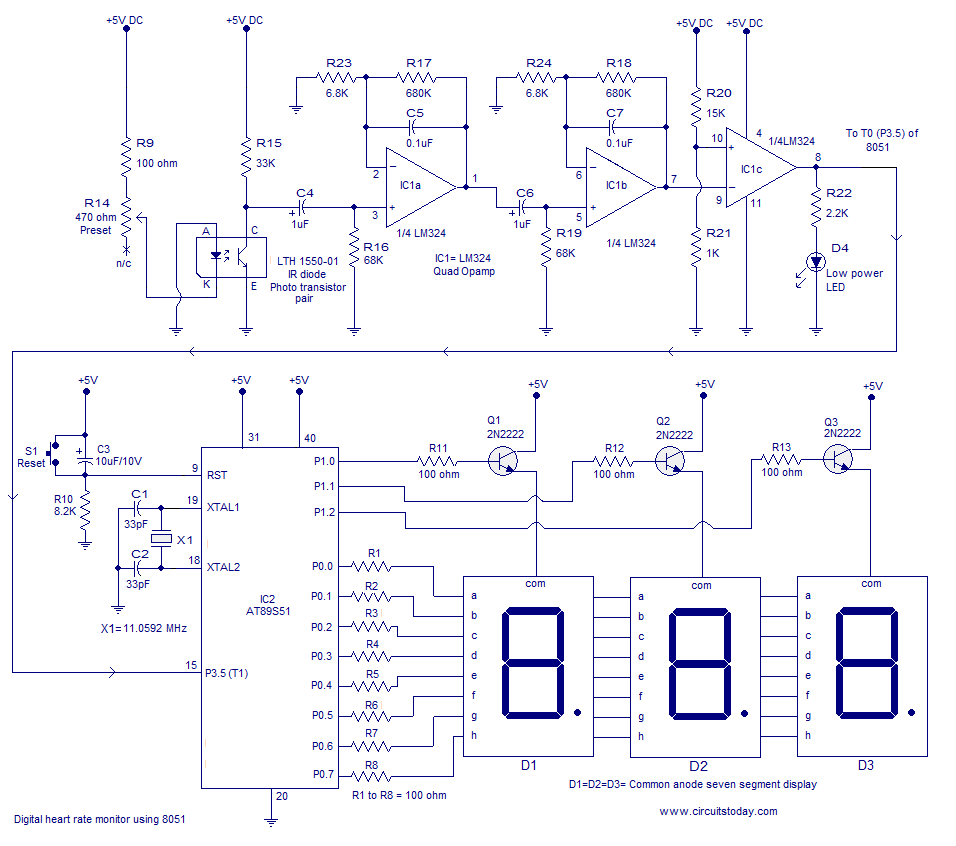
Speech Pitch Controller (MSM6322GSK)
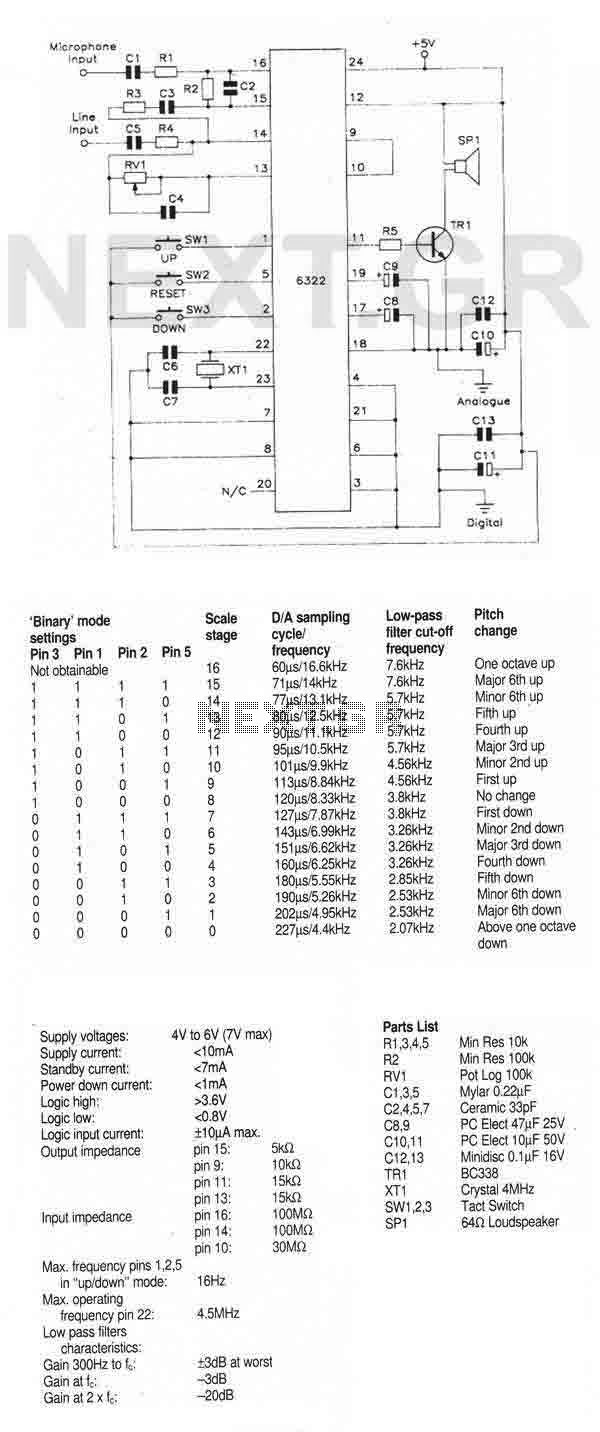
The circuit utilizes the MSM6322GSK, which is available in a compact 24-pin plastic SOP package. This integrated circuit (IC) functions as a real-time speech pitch converter and requires minimal external components. It includes a microphone preamplifier and a line-level input, while the output can drive a loudspeaker directly with the addition of a single transistor. The IC features a 4th order low-pass filter on the input and a 3rd order low-pass filter on the output. Furthermore, it incorporates an 8-bit A/D converter and a 9-bit D/A converter. The pitch of the speech can be modified in 17 steps across a range of one octave upward and one octave downward, and it supports two operational modes. In the up/down mode, two inputs are provided that, when pulsed, sequentially adjust the pitch upward or downward.
The MSM6322GSK circuit is designed for applications requiring real-time manipulation of speech pitch, making it suitable for various audio processing tasks. The compact 24-pin SOP package allows for integration into space-constrained designs, such as portable devices or compact audio systems. The microphone preamplifier amplifies the input signal from a microphone, ensuring that the audio signal is adequately processed by the internal circuitry.
The inclusion of a 4th order low-pass filter on the input stage effectively reduces high-frequency noise, enhancing the clarity of the speech signal before it undergoes pitch conversion. Similarly, the 3rd order low-pass filter on the output stage ensures that the final output to the loudspeaker is smooth, minimizing distortion and artifacts that could arise from abrupt changes in pitch.
The built-in 8-bit A/D converter allows for the digitization of the incoming analog audio signal, while the 9-bit D/A converter enables the reconstruction of the processed audio signal for output. This dual conversion capability ensures high fidelity in audio processing, making the circuit suitable for professional audio applications.
The pitch alteration feature, which allows for adjustments in 17 discrete steps over a range of one octave up and down, provides flexibility in voice modulation. This can be particularly useful in applications such as voice synthesis, audio effects, or assistive technologies for speech enhancement. The two operational modes, including the up/down mode, facilitate intuitive control over pitch changes, allowing for easy implementation in user interfaces where users can pulse the designated inputs to achieve the desired pitch effect.
Overall, the MSM6322GSK circuit presents a versatile solution for real-time speech pitch conversion, combining advanced filtering, conversion capabilities, and user-friendly operation in a compact package.That circuit uses the MSM6322GSK which is only available in small 24 pin plastic SOP style package. A speech pitch converter IC that operates in real time and requires very few external components. It has a microphone preamplifier and line level input and the output requires only a single transistor to directly drive a loudspeaker. As well as the microphone preamplifier, the IC contains a 4th order low pass filter on input and a 3rd order low pass filter on output.
In addition there is a build-in 8-bit A/D converter and 9-bit D/A converter. The pitch of the speech is alterable in 17 steps over a range of one octave up and one octave down, and there are two models of operation. In the up/down mode two inputs are provided which when pulsed, move the pitch up or down sequentially through the pi
🔗 External reference
The MSM6322GSK circuit is designed for applications requiring real-time manipulation of speech pitch, making it suitable for various audio processing tasks. The compact 24-pin SOP package allows for integration into space-constrained designs, such as portable devices or compact audio systems. The microphone preamplifier amplifies the input signal from a microphone, ensuring that the audio signal is adequately processed by the internal circuitry.
The inclusion of a 4th order low-pass filter on the input stage effectively reduces high-frequency noise, enhancing the clarity of the speech signal before it undergoes pitch conversion. Similarly, the 3rd order low-pass filter on the output stage ensures that the final output to the loudspeaker is smooth, minimizing distortion and artifacts that could arise from abrupt changes in pitch.
The built-in 8-bit A/D converter allows for the digitization of the incoming analog audio signal, while the 9-bit D/A converter enables the reconstruction of the processed audio signal for output. This dual conversion capability ensures high fidelity in audio processing, making the circuit suitable for professional audio applications.
The pitch alteration feature, which allows for adjustments in 17 discrete steps over a range of one octave up and down, provides flexibility in voice modulation. This can be particularly useful in applications such as voice synthesis, audio effects, or assistive technologies for speech enhancement. The two operational modes, including the up/down mode, facilitate intuitive control over pitch changes, allowing for easy implementation in user interfaces where users can pulse the designated inputs to achieve the desired pitch effect.
Overall, the MSM6322GSK circuit presents a versatile solution for real-time speech pitch conversion, combining advanced filtering, conversion capabilities, and user-friendly operation in a compact package.That circuit uses the MSM6322GSK which is only available in small 24 pin plastic SOP style package. A speech pitch converter IC that operates in real time and requires very few external components. It has a microphone preamplifier and line level input and the output requires only a single transistor to directly drive a loudspeaker. As well as the microphone preamplifier, the IC contains a 4th order low pass filter on input and a 3rd order low pass filter on output.
In addition there is a build-in 8-bit A/D converter and 9-bit D/A converter. The pitch of the speech is alterable in 17 steps over a range of one octave up and one octave down, and there are two models of operation. In the up/down mode two inputs are provided which when pulsed, move the pitch up or down sequentially through the pi
🔗 External reference
